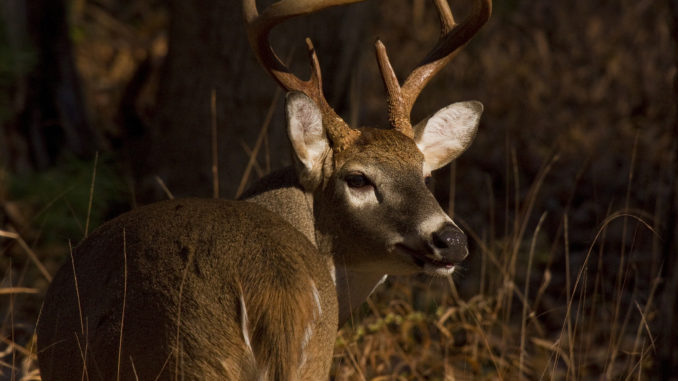
Learn what managers say about the upcoming deer season
The northeastern corner of North Carolina, particularly Northampton County, is the place to find whitetail deer in big numbers and big sizes, according to last year’s harvest figures.
Results released by Evin Stanford, the N.C. Wildlife Resources Commission’s supervising big-game biologist, show that Northampton led the state in overall deer harvest and the harvest of bucks per square mile.
Northampton lies at the center of North Carolina’s “Peanut Belt” and annually ranks high in deer kills.
“Northampton has a high deer population, good habitat including a high amount of agricultural land and is a very popular hunting place,” Stanford said. “It also has part of the Roanoke River Game Lands and National Wildlife Refuge that are popular places to hunt deer.”
Most of the land is planted in peanuts, corn, soybeans and cotton — the first three being prime food sources for whitetails. Much of the best habitat also lies along the Roanoke River drainage, which features hardwood forests and swamps for cover and efficiently-managed hunting lodges that cater to deer hunters.
On much of the private land — especially the lodges — deer are managed using Quality Deer Management theories that emphasize balanced buck-and-doe numbers, high doe harvests and protecting smaller bucks.
In Northampton and neighboring Bertie and Halifax counties, bowhunters downed twice as many does as antlered bucks, while the overall harvest showed a near 50-50 split between the genders.
Hunters in Northampton tagged 6,063 deer in 2010, including an average of 5.16 bucks per square mile, top numbers in the state for both categories.
Despite high kill numbers, these counties also produced some whopping whitetail racks.
Tripp Todd, a 24-year-old senior at Shaw University, shot North Carolina’s No. 1 non-typical last Oct. 18, an 18-point brute with more than 182 inches of antlers, while hunting with his grandfather on private land in Northampton County. A month earlier, Conway’s John Kellett arrowed a 20-point buck with almost 156 inches of antler that was the state’s biggest bowkilled non-typical.
Northampton wasn’t the only county in Northeast North Carolina to showcase high harvest numbers last season.
Halifax County, just across the Roanoke River and featuring almost identical habitat, was second in overall harvest numbers (5,841) and third in bucks killed per square mile (3.93).
Bertie County, which borders both Northampton and Halifax, was third in overall harvest (4,977) and 10th in bucks per square mile (3.15).
Lee Mizelle killed a huge buck out of a Bertie County beanfield on Nov. 9 with a basic 5×5 frame and two sticker points that scored 169 net inches. A week later, Steve Johnson returned from a beach trip to find two massive 10-pointers with antlers locked, dead in a Bertie County soybean field.
Hertford County, which shares a border with Northampton, also provided a massive buck, a 12-pointer arrowed Sept. 11, 2010, by Brad Stoops of Windsor.
Interestingly enough, Eastern North Carolina appears to be catching up to the northern piedmont as a producer of trophy whitetails. The 14 big-buck categories at the 2011 Dixie Deer Classic split 7-7 between eastern counties and counties from the piedmont and west.
The three major changes in Tarheel State deer hunting last season involved an extra week of muzzleloader season — and a corresponding loss of a week for archery-only season — the widespreada use of crossbows and Sunday hunting by traditional bowhunters and hunters using crossbows. The extra week of muzzleloader season had the largest effect on the harvest.
Editor’s note: Download the digital edition of the magazine right to your computer or smartphone to read the rest of the predictions.
Be sure to subscribe to ensure you don’t miss a single information-packed issue of North Carolina Sportsman.




Be the first to comment